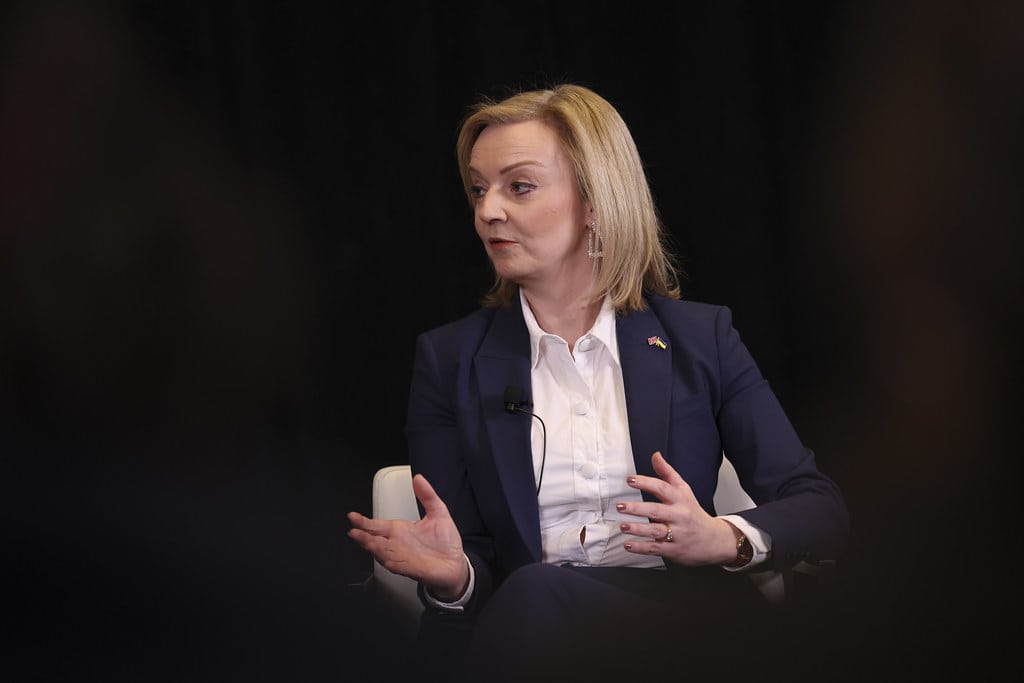
Liz Truss and Rishi Sunak are the two remaining candidates for leader of the Conservative Party, with party members set to vote in September. Image: UK Government (Flickr).
In the most recent leadership hustings, held in Darlington, Conservative leadership candidate and MP for South West Norfolk Liz Truss again suggested solar farms negatively impacted food security.
“I’m somebody who wants to see farmers producing food, not filling in forms, not doing red tape, not filling fields with paraphernalia like solar farms. What we want is crops, and we want livestock,” she said, continuing to highlight that both food and energy security are key issues currently due to the war in Ukraine.
The statement follows on from comments made by both Truss and her opponent Rishi Sunak in a previous hustings held in Exeter at the beginning of August. Both have argued that land should be used for crops, instead of solar panels.
Agricultural land classification and solar farms
In Britain, agricultural land is divided into a number of categories on the basis of what is considered Best and Most Versatile (BMV).
The agricultural land classification (ALC) grades land from 1-5, with a number of subsections. Grade 1 is considered excellent quality agricultural land, best for growing fruit and salad crops for example, whilst Grade 5 is very poor quality agricultural land, suitable mainly for just permanent pasture or rough grazing.
Solar farms are not built on land considered BMV within the ALC, and instead on land that falls into Grade 3B – denoting moderate quality agricultural land – or below. As such, it does not have a significant impact on food production or security in Britain.
“The language used so far over the course of the Conservative leadership race regarding solar and land use is deeply concerning, and the REA urges the candidates to recognise that solar farms do not encroach on agricultural land,” said Mark Sommerfeld, head of power and flexibility at the Association for Renewable Energy and Clean Technology (REA).
“The solar industry aims to work in conjunction with, not against, agricultural use of land, commonly by either building on marginal land or ensuring multi-land use applications. In doing so, it provides additional revenue to farmers – supplementing, not stopping, more traditional livestock and arable farming activities.”
Energy and food security amidst geopolitical uncertainty
Concern around the impact of the Russian invasion of Ukraine on both energy security and food security has certainly been growing in recent months. This has been particularly notable as heatwaves have gripped the UK repeatedly in recent months, having a knock-on impact on both crops – with farmers struggling to manage droughts – and energy generation, with two Capacity Market Notices issued so far, a very rare occasion in summer months.
An independent National Food Strategy Review earlier this year concluded that solar projects do not present a risk to the UK’s food security.
Additionally, if every solar farm currently put forward was built, this would still account for less than 0.4% of the UK’s agricultural land and 0.28% of the UK’s entire land area, according to Solar Energy UK.
“
“The language used so far over the course of the Conservative leadership race regarding solar and land use is deeply concerning, and the REA urges the candidates to recognise that solar farms do not encroach on agricultural land,” said Mark Sommerfeld, head of power and flexibility at the REA.
As such – and taking into account that they are not built on Britain’s BMV agricultural land – Truss’s repeated attacks on the technology in light of food security are misguided.
“Solar farms are not paraphernalia,” added Kevin McCann, acting head of policy at Solar Energy UK.
“With reports that crops are failing because of this year’s drought, the need to address climate change is greater and more obvious than ever. Solar farms help do this, providing clean and affordable energy at the same time – and so also helping to address the cost of living crisis.”
Additionally, far from damaging the natural environment, solar farms have been found to have a broadly positive impact on biodiversity. For example, developing solar farms on previously arable land gives it a break from intensive cultivation, which can boost biodiversity, soil health and regeneration, according to a report from Solar Energy UK in May, ultimately improving food production in the long term.
The general public are broadly in support of solar farms, which are one of the cheapest forms of power in the country, a particularly key point in the midst of surging energy bills on the back of wholesale gas prices.
A recent survey from Department for Business Energy and Industrial Strategy indicated that over 80% of the population support solar and just 3% are actually in opposition to it, making it the most popular renewable technology. Similarly, a recent YouGov survey of Conservative Party members found that 73% supported solar, including ground-mounted solar farms.
“Given the current heatwave, and the loss of crops as drought is declared across eight regions of England, it seems odd that the Conservative leadership candidates should be pushing against one of the cheapest solutions to replacing gas imports that are driving up energy bills and the cost of living,” continued Sommerfeld.
“Pledging to change planning laws to restrict further solar development would pose a serious threat to the jobs and investment created by the solar industry. It would undermine the UK’s ability to reach net zero and keep us locked in to expensive fossil fuels at a huge cost to households and businesses. Delivering more solar projects is not only an environmental imperative, but an economic one too.”
Green levies and support for future solar farms
Within the hustings in Darlington last week (9 August), Truss also reiterated her plans for an “immediate moratorium on the green levies to cut people’s fuel bills”.
Such a measure has been widely criticised by the energy sector, which has emphasised that renewables – as mentioned above in relation to solar specifically – are the cheapest form of generation in the country, and transitioning away from gas at pace is one way to secure Britain’s energy system in the future.
According to the Energy and Climate Intelligence Unit (ECIU) earlier this month, come October so-called ‘green levies’ – which are used to fund the measures like the Contracts for Difference (CfD) scheme – will drop to just 2% of the average dual fuel bill.
Indeed, renewable energy projects that already hold CfDs have been paying back to households amidst the high wholesale prices over the last six months. CfD projects are now predicted to pay back £25 to each household this winter, and around £45 a year to each household from next winter.
